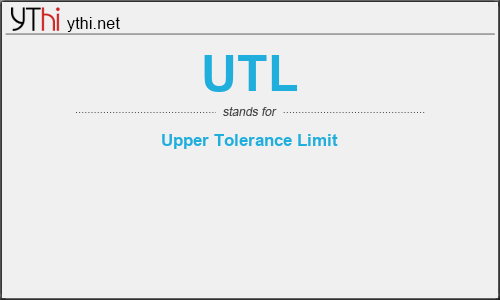What does UTL mean? What is the full form of UTL?
The Full Form of UTL is Upper Tolerance Limit.
Tolerance intervals are statistical ranges typically constructed from on-site background data. Tolerance limits define the range of data that fall within a specified percentage with a specified level of confidence. The upper tolerance limit has been commonly used to establish a background threshold value, however, prediction limits are often favored for establishing a background threshold value in groundwater because they account for repeated measures. An upper tolerance limit (UTL) is designed to contain, but not exceed, a large fraction (that is, 95%, 99%) of the possible background concentrations, thus providing a reasonable upper limit on what is likely to be observed in background. Similarly, the lower tolerance limit (LTL) is designed to contain at most a certain percentage of the possible background concentrations, thus providing a reasonable lower limit on what is likely to be observed in background. The fraction to be contained or ‘covered’ by the limit is the coverage parameter, and must be specified along with a desired confidence level. Tolerance limits explicitly account for the degree of variation in the background population and the size of the sample of measurements used to construct the limit. Table F-2 includes information about checking assumptions for Tolerance limits. Tolerance limits and confidence limits (see Section 5.2) are distinct, even though in some cases the one-sided upper limits for both methods are equivalent.
UTL
means
Upper Tolerance Limit![]()
Translate Upper Tolerance Limit to other language.


Leave a Reply
You must be logged in to post a comment.